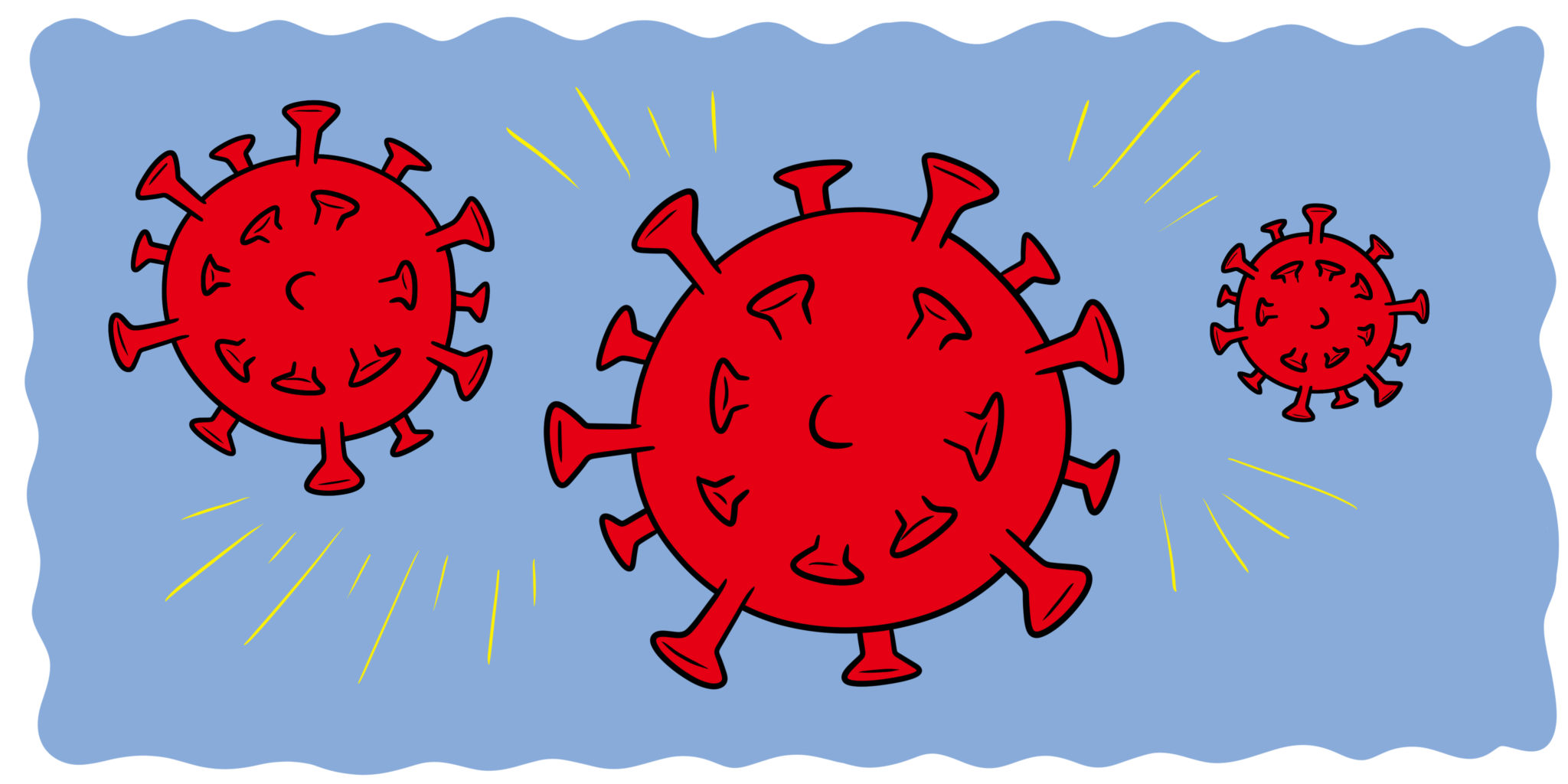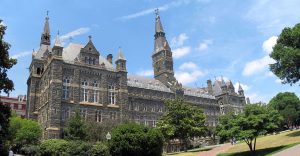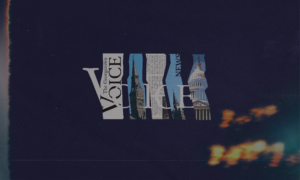This piece appears as part of our On The Pandemic column, featuring commentary about the COVID-19 pandemic from a diverse set of voices.
“I bet you have the virus.”
The words take me by surprise. Is my nose runny? Do I look warm? I feel fine. I glance at my reflection in the train window. I look fine. I then realize it is because I am Chinese. I get off at the next stop and try to act normal. Only, I am normal. I’m perfectly fine.
While I would like to think that man in early March was a delusional anomaly, I know that my experience was but one of many in the wave of racially-charged verbal and physical abuses against Asians and Asian Americans during this pandemic. Stories of having property damaged, being spit at, getting punched and called “diseased” are among recent reports of anti-Asian sentiment in the United States. The website “Stop AAPI Hate” reported over 1,100 incidences nationwide of verbal harassment, shunning, and physical assault towards Asian American and Pacific Islanders (AAPI) in the two weeks following its launch on March 19.
With the rise in anti-Asian sentiment, I can’t help but feel uneasy in the rare times I do leave my house since the stay-at-home orders began. I wonder if the man who pushes his cart past mine in the supermarket sees me and feels hate. I worry if today might be the day some crazed stranger passes me or my family and reacts violently.
It also doesn’t help when lawmakers participate in this dangerous rhetoric. In mid-March, President Donald Trump said it was acceptable to call the virus the “Chinese virus” and that such words did not put Asian Americans at risk. While he has since tweeted it is important to protect Asian Americans and that they are not to blame, the damage has already been done. The focus on China as the virus’ source stalled safety measures to block travel from other countries, even as danger elsewhere began to escalate. President Trump blocked travel from China at the end of January, but waited weeks to do so with countries in Europe, the source of most COVID-19 cases in New York, my home state.
Despite the virus affecting over 200 countries and territories, conservative pundits and public figures continue to associate the virus with the Chinese. When asked why COVID-19 wasn’t a problem in his city, a Republican chairman in Kansas said, “Italy has a lot of Chinese people, and we don’t have that problem here.” Such statements foster hate and division. They convince people they don’t have to take the necessary precautions, putting their lives at risk and contributing to the disease’s spread. Conspiracy theories also continue to arise, claiming that the virus was a bioweapon made by China, despite being repeatedly discredited by researchers.
Such misinformation threatens public health and encourages racist sentiment towards Asians and Asian Americans who are facing the same struggles as the rest of the nation. Among the 22 million Americans who have filed for unemployment benefits are my parents who work in Chinese restaurants in New York City. While most American businesses have only begun to experience financial hardship from the pandemic in recent weeks, Chinese businesses in the U.S. have been suffering since January, when there were hardly any reported domestic cases at the time and no reason for social distancing. In my neighborhood Flushing, Chinese businesses experienced a 40 percent drop in revenues in February, with some down by as much as 70 percent. This was when there were fewer than 15 cases of COVID-19 nationwide. All this has made money incredibly tight for workers in these businesses. My mother saw her shifts cut in half in January and February, a time when business is normally at its peak.
As an Asian American, I’ve often been confused about how to deal with race and racism. Growing up and hearing Black and Latinx narratives of oppression and bigotry in this country, I often felt like I didn’t deserve to complain. While I’ve heard racist jokes towards people of Asian descent and noticed their lack of representation in the media, the only other time I’ve directly received a racist comment was when I was fifteen and someone told me to go back to where I came from. My struggles have always seemed relatively minor.
Plus, I always felt I belonged here. I was born in Queens, New York, a child of two Chinese working-class immigrants. Contrary to Andrew Yang’s opinion, Asian Americans are American simply in being and don’t need to “show our American-ness in ways we never have before.” I vote, I canvass, I study in the nation’s capital. As a Science, Technology, and International Affairs major, I know this pandemic will be something I will learn from and work to prevent someday. To be seen as foreign and a threat to the nation you’re working to serve is frustrating and painful.
Still, finding a minority scapegoat in times of crisis is not new. It was done post-9/11 against Muslims, Arabs, and South Asians. It was done to the Japanese during World War II. Anti-Asian sentiment has deep roots in American history. The Chinese Exclusion Act of 1882 was the first immigration law in the U.S. that barred a specific ethnic group. The term “yellow peril,” which has been around since 1895, refers to the idea that East Asians are a threat to the sanctity of the Western world. China’s rise as a global hegemon, however, makes this newest wave of “yellow peril” and racial scapegoating a unique case.
I first noticed the nation’s rising anti-Asian sentiment during the trade war in 2018, before the world had seen any COVID-19 cases. The tit-for-tat negotiations made obvious to the American public China’s threat to U.S. hegemony. During that time, the share of Americans who had an unfavorable view of China rose to 60 percent, an all-time high. President Trump’s hostile, Orientalist rhetoric contributed to this feeling, at one point even describing China’s actions towards the U.S. as a “rape.” He has since accused Chinese students at U.S. universities of being spies, seemingly justifying other accusations and threatening the safety of not only Chinese internationals, but Chinese Americans.
I had expected this anti-Asian sentiment to naturally escalate as power relations grew tenser between the U.S. and China—I just didn’t think it would escalate so quickly. Perhaps what surprised me the most was that this sentiment existed in some of my closest friends, one of whom even asked me why the Chinese ate bats. Such questions feed a racist Western stereotype of the East and their exotic diets. Like my friend, most people are not instigators of racist verbal and physical harassment, but this doesn’t mean racist narratives haven’t seeped into their thinking. We have to ask ourselves the ways we are complicit with the overgeneralizations and assumptions we absorb and promote as fact.
U.S. politicians have used this pandemic to enhance their political agendas, foster nationalism, and displace blame. It’s easy to fall into these thought traps when they appear as efforts to protect public health. It can feel good to have someone to blame, especially when they don’t look like yourself. While Western politicians blame China for covering up the disease in January, they, too, are guilty of delaying their responses long after they had clear warnings, with the U.K waiting eight weeks and the U.S. waiting 70 days.
Besides, nationalism isn’t going to solve this pandemic. This renewed racism against Asian Americans will likely worsen as the pandemic and subsequent recession deepen. It will likely continue well after this crisis. When we feel like pointing fingers, we should take a moment to ask ourselves who really had the agency to mitigate this disaster and didn’t. Like the rest of the world, Asian Americans are living in a time of fear, uncertainty, and powerlessness. Many are also working on the front lines; about a fifth of doctors in the U.S. are Asian American. While we cannot control the words that come out of our politicians’ mouths, we can control whether we believe them. We can stand in solidarity with Asian Americans by supporting Asian businesses, donating food to vulnerable communities, and safely reaching out to those feeling particularly lonely and threatened. But first, we must refuse to attribute this virus to any race.
Image Credit: Matthew Loffhagen




